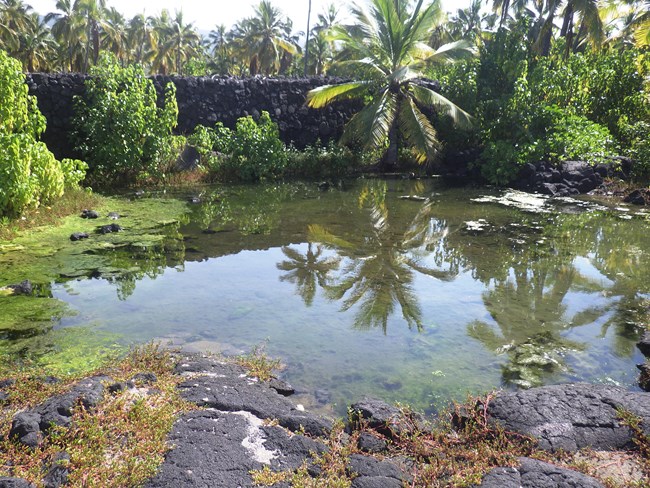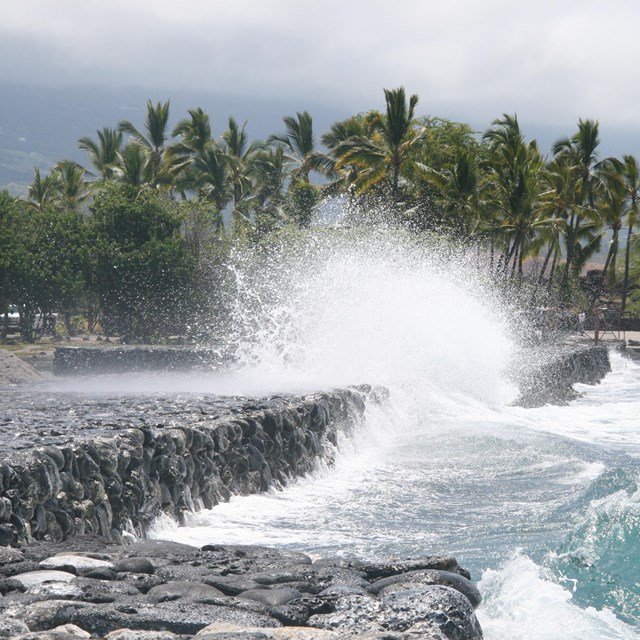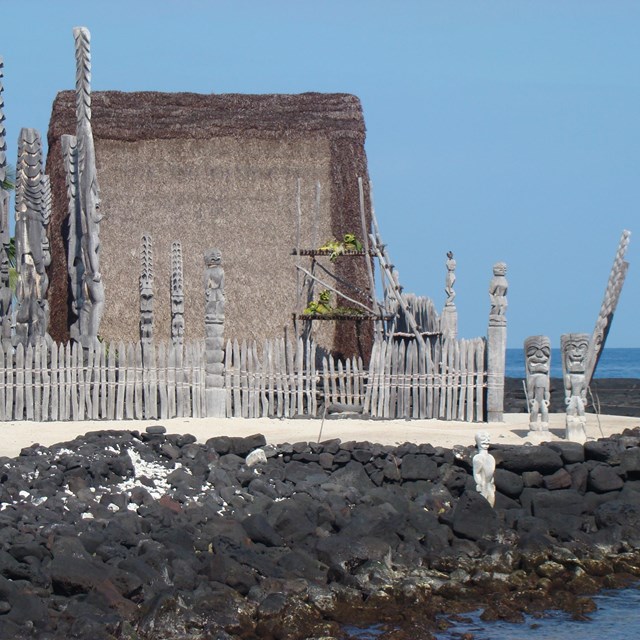
NPS Photo/A. McCutcheon
Description and Rationale
Anchialine pools are unique brackish water environments that form in lava fields near the ocean. They are landlocked pools fed by subsurface groundwater (freshwater) and tides (seawater) with no visible connection to the ocean. Anchialine pools vary significantly in size and structure from large fishponds to small lava cracks. Hawai‘i is the only state with these special pools.
Anchialine pools provide critical habitat for rare invertebrate species including shrimp, snails, and damselflies. Many of these species are endemic to the Hawaiian Islands, meaning they exist nowhere else in the world. Anchialine pools face a multitude of threats which threaten their unique animal populations, from exotic species introductions to coastal development and habitat destruction. Pacific island national parks are working to protect some of these last remaining habitats vital to Hawaiʻi's natural and cultural history.
Monitoring Objectives
- Determine long-term trends in the composition and diversity of target species of native and introduced fish and invertebrates in selected anchialine pool communities.
- Determine long-term trends in the distribution and abundance of native and introduced fish and invertebrate target species populations in selected anchialine pools.
- Improve understanding of relationships between anchialine pool animal communities and nearby habitat management by correlating physical and chemical habitat measures with changes in distribution and abundance of fish and invertebrates.
Monitored At
-
 Kaloko-Honokōhau NHP
Kaloko-Honokōhau NHPSee what's monitored at Kaloko-Honokōhau National Historical Park.
-
 Pu‘uhonua o Hōnaunau NHP
Pu‘uhonua o Hōnaunau NHPSee what's monitored at Pu‘uhonua o Hōnaunau National Historical Park.
Last updated: December 21, 2023
